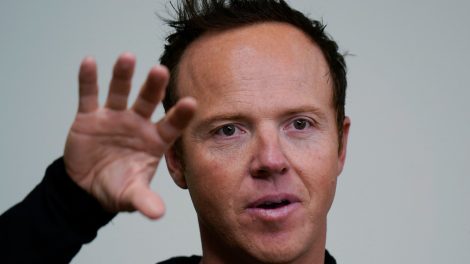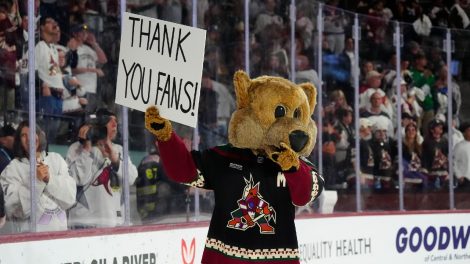VANCOUVER — Peter Tingling says he’s finally noticing a shift in how the hockey world views advanced statistics.
That doesn’t mean there isn’t still a long way to go.
“If you think Corsi is analytics, you think the crossbow is a modern weapon,” said Tingling, a management information systems professor at Simon Fraser University. “The fact of the matter is hockey’s in the dark ages. Nice to see them finally step up a little bit.”
Corsi — plainly referred to as “shot attempts percentage” by the NHL — is a fairly basic formula that helps figure out how much a team possesses the puck relative to its opponent.
But as more data has become available in recent years thanks to better tracking of players on the ice, advanced statisticians have rapidly expanded with new, more detailed ways to both measure, and attempt to predict, performance.
“Analytics are about how do we get the most juice out of the lemon?” said Tingling. “How do we get the right piece of the jigsaw puzzle in place?”
With questions like those in mind, Tingling is part of a group at SFU hosting a hockey analytics conference in Vancouver on Saturday that’s expected to attract executives, academics, students and fans.
And while advanced stats are being viewed more favourably in the NHL — many teams have analytics departments and the league’s website has been updated with enhanced statistical categories — event organizers say it’s still an uphill climb.
“To do something differently you have to challenge the status quo,” said Tim Swartz, a statistics professor at SFU and the driving force behind the conference. “The analytics-type people aren’t necessarily hockey people. It takes some time. Results get communicated, but they don’t always get accepted.”
Swartz co-authored a paper a few years ago that tackled when a team down by one in third period should pull its goalie. The numbers showed the optimal time was with three minutes left, much sooner than what had been the accepted norm.
After some initial shock from fans and media when Colorado Avalanche head coach Patrick Roy brought the practice to the NHL, other teams started to gradually follow suit.
“I like looking at problems of strategy and how to best utilize resources,” said Swartz. “There’s a salary cap, so how do you spend your money wisely? What’s a player worth? That’s kind of the holy grail of sports problems — player evaluation.
“We all know Sidney Crosby is great, but there’s a whole bunch of (supporting) guys who might be comparable. Who’s best for your team?”
Analytics have been prevalent for some time in other sports like basketball and baseball, but hockey has lagged behind.
“Teams may not have the technical capabilities, they may not be interested, coaches may be old-school,” said Peter Chow-White, a communications professor and big data researcher at SFU. “But there’s a generational shift happening right now and it seems fairly inevitable that most sports will turn to this as part of what they do.”
The small-market Oakland Athletics overcame budget constraints to topple big-spending opponents in the early 2000s using the “Moneyball” strategy. Swartz doesn’t expect there to be as big an impact in the NHL, but the proper implementation of analytics could still be significant.
“Teams will get an edge by doing things a little bit different,” he said. “Sometimes small gains are important. If you move a couple points up in the standings, that could be a playoff spot.”
Chow-White said one of the conference’s goals is to help bring hockey analytics a little more into focus.
“This weekend represents an expanded conversation,” he said. “It’s everyday people that are interested in this because they’re fans of the sport and they want to think about it smarter.
“If you watch a game on television you will barely see anybody talk about advanced analytics. There’s a sea of analytics that will not show up, and when they do, sometimes they’re met with disdain.”
Like the rest of his colleagues, Chow-White also wants to make it clear that analytics have limits, something the group is also trying to convey to doubters.
“I think one of the misunderstandings of analytics is that somehow it’s a magic bullet — somehow going to solve things, somehow going to win games,” he said. “Numbers don’t win games, people win games.
“Some of the pushback against analytics is that it’s flying in the face of the way people do things, it’s flying in the face of the way people use their gut and their instincts to make decisions.”
Tingling has focused his research off the ice in how management makes some of those decisions and will have a talk on Saturday about drafting, trades and how the Detroit Red Wings have excelled in player development.
“Nobody could ever run any organization, I don’t care if it’s General Electric or the Vancouver Canucks, off a spreadsheet,” he said. “You still have to press the flesh. It’s still about the human, it’s still about the person.
“But if people can improve decision making, it’s amazing what kind of performance boost we get. Most of us aren’t very good at making decisions, and I think we should try and be a little better at it.”









